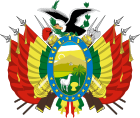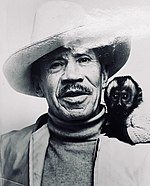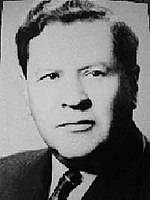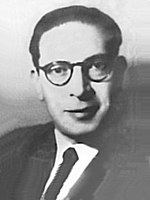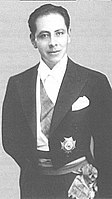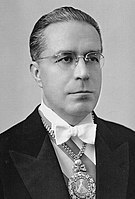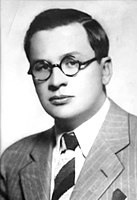
Gualberto Villarroel López was a Bolivian military officer who served as the 39th president of Bolivia from 1943 to 1946. A reformist, sometimes compared with Argentina's Juan Perón, he is nonetheless remembered for his alleged fascist sympathies and his violent demise on 21 July 1946.

Enrique Peñaranda del Castillo was a Bolivian general who served as the 38th president of Bolivia from 1940 until his overthrow in 1943. He previously served as commander-in-chief of the country's armed forces during the second half of the Chaco War (1932–1935).
Bolivia's defeat by Paraguay in the Chaco War of 1932–1936 marked a turning point in the modern history of Bolivia. Great loss of life and territory discredited the traditional ruling classes, while service in the army produced stirrings of political awareness among the indigenous people. A large portion of the contested Gran Chaco region was surrendered to Paraguay. In return Bolivia was given access to the Paraguay River where Puerto Busch was founded and, with this, free access to the Atlantic Ocean through international waters was possible. In 1936 Standard Oil's Bolivian operations were nationalized and the state-owned firm Yacimientos Petroliferos Fiscales Bolivianos (YPFB) was created. From the end of the Chaco War until the 1952 Bolivian National Revolution, the emergence of contending ideologies and the demands of new groups convulsed Bolivian politics.

Bolivia has had seventeen constitutions, including the present one, since its foundation in 1825.
Bolivia has experienced more than 190 coups d'état and revolutions since its independence in 1825. Since 1950, Bolivia has seen the most coups of any other country. The last known attempt was in 1984, four years after the country's transition to democracy in 1980.

Enrique Peñaranda assumed office as the 38th President of Bolivia on 15 April 1940, and his term was terminated by a coup d'état on 20 December 1943. A general in the Chaco War, Peñaranda was brought forth by the traditional conservative political parties, sidelined since the end of the Chaco War, as their candidate in the 1940 general elections.
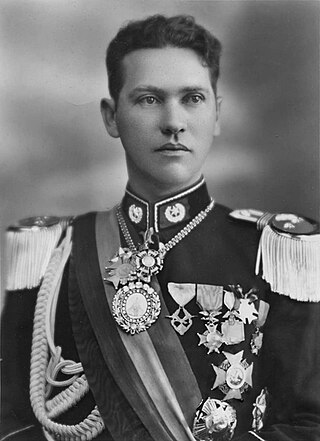
Germán Busch assumed office as the 36th President of Bolivia on 13 July 1937, and his term was cut short by his death on 23 August 1939. A young military officer during the Chaco War, Busch attempted to champion the cause of Military Socialism brought forth by his predecessor David Toro but, unhappy with the results produced by his few reforms, opted to declare himself dictator in April 1939 before committing suicide four months later.

Carlos Quintanilla assumed office as the interim 37th President of Bolivia on 23 August 1939, and his mandate ended on 15 April 1940. A general of the senior officer corps, Quintanilla assumed control of the presidency on an interim basis following the suicide of his predecessor, Germán Busch.

Néstor Guillén assumed office as the interim 40th President of Bolivia on 21 July 1946, and his mandate ended on 17 August 1946. A magistrate of the Superior District Court of La Paz, Guillén was chosen to lead an interim junta in the absence of the President of the District Court Tomás Monje, who was ill at the time, in the wake of the violent demise of President Gualberto Villarroel.
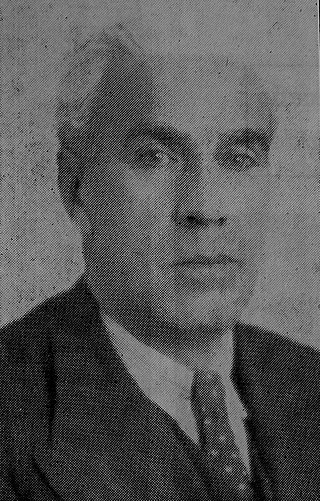
Tomás Monje assumed office as the interim 41st President of Bolivia on 17 August 1946, and his mandate ended on 10 March 1947. The President of the Superior District Court of La Paz, Monje was chosen to lead an interim junta following the violent overthrow of President Gualberto Villarroel on 21 July 1946. Having been ill at the time, Monje only assumed the position 27 days later, chairing the junta until new elections could be held.

Enrique Hertzog assumed office as the 42nd president of Bolivia on 10 March 1947, and his term ended upon his resignation on 22 October 1949. A physician who served in various ministerial positions since the 1920s, Hertzog was elected as the head of the Republican Socialist Unity Party (PURS) ticket in the 1947 general elections.

Gabriel Gosálvez Tejada was a Bolivian politician, journalist, economist, and diplomat. Throughout his political career, Gosálvez held various ministerial officers and diplomatic posts as a member of the United Socialist Party. When that party merged into the Republican Socialist Unity Party, Gosálvez was presented as its presidential candidate in the 1951 general election.
The Government Junta of Bolivia was a civil-military junta which ruled Bolivia from 20 December 1943 through 5 April 1944. It consisted of representatives of the armed forces through the Reason for Fatherland (RADEPA) military lodge as well as members of the Revolutionary Nationalist Movement (MNR). The President of the Junta was Colonel Gualberto Villarroel who came to power after a coup d'état which overthrew the government of Enrique Peñaranda. Immediately upon its inception, the junta faced a diplomatic blockade by the United States who viewed the MNR as sympathetic to the fascist powers of World War II and as such led the rest of Latin America in refusing to recognize the new regime until all members of the MNR were removed from the administration. After months of attempted negotiations and the removal of several cabinet ministers, the government finally relented and dismissed all remaining MNR members, dissolving the junta and entrusting Villarroel with the provisional Presidency of the Republic on 5 April 1944.
The Government Junta of Bolivia, officially known as the Honorable Government Junta, was a civil junta which ruled Bolivia from 21 July 1946 through 10 March 1947. It consisted of labor, teacher, and student representatives as well as magistrates of the Superior District Court of La Paz. The President of the Junta was Superior District Court President Tomás Monje who was appointed following the violent overthrow of President Gualberto Villarroel on 21 July 1946. As Monje was ill at the time of Villarroel's death, Néstor Guillén, the Dean of the Superior District Court, took charge for the first 27 days before delegating command to Monje on 17 August 1946. As President of the Junta, Monje acted as a neutral figure heading the transition back to civilian government. The junta was dissolved on 10 March 1947 when Enrique Hertzog, winner of the January general election, took office as president.

José Miguel de Velasco assumed offices as the 4th President of Bolivia on 12 August 1828. Due to the tumultuous events of the time, the original cabinet formed by Velasco on 12 August 1828 continued to function until 24 May 1829, spanning the entire six day presidency of Pedro Blanco Soto and the two nonconsecutive terms of Velasco which preceded and succeeded him.

Eduardo Arze Quiroga was a Bolivian scholar, journalist, politician, and diplomat who served as Minister of Foreign Affairs from 1960 to 1962 in the second cabinet of Víctor Paz Estenssoro. Prior to that, he served in various diplomatic offices in the governments of Enrique Peñaranda and Gualberto Villarroel.

The 1946 La Paz riots were a series of increasingly violent strikes and protests which culminated in the lynching and hanging of then president Gualberto Villarroel and the complete collapse of his government. The riots occurred in the Bolivian capital of La Paz between 8 and 21 July 1946. What started as teachers' strikes demanding increased wages quickly escalated as university students, organized labor workers, and civilians clashed with municipal police and armed, pro-government civilians. By the end, interim control of the country was handed to a junta of representatives of the three striking groups chaired by independent magistrates of the Superior Court of Justice of the judicial district of La Paz.
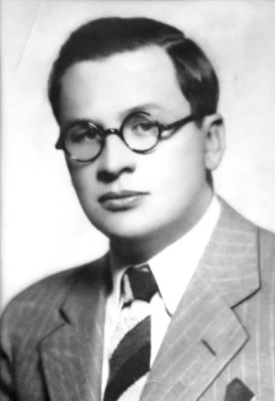
Carlos Montenegro Quiroga was a Bolivian lawyer, journalist, politician, and writer who served as minister of agriculture from 1943 to 1944. He was the principal political theorist of the Revolutionary Nationalist Movement, co-founding the party newspaper La Calle which laid the ideological bases of the party. His most famous work, Nacionalismo y coloniaje (1943), an essay on the influence of journalism in the history of Bolivia, is considered to be one of the most influential works in Bolivian historiography.

Hernán Terrazas Céspedes was a Bolivian general who served as Mayor of Cochabamba during the era of dictatorships in Bolivia. Early in his military career he was stationed in the Rocha Regiment and, as a second lieutenant, formed part of the rebel lines in Incahuasi during the 1949 coup d'état in Bolivia.

